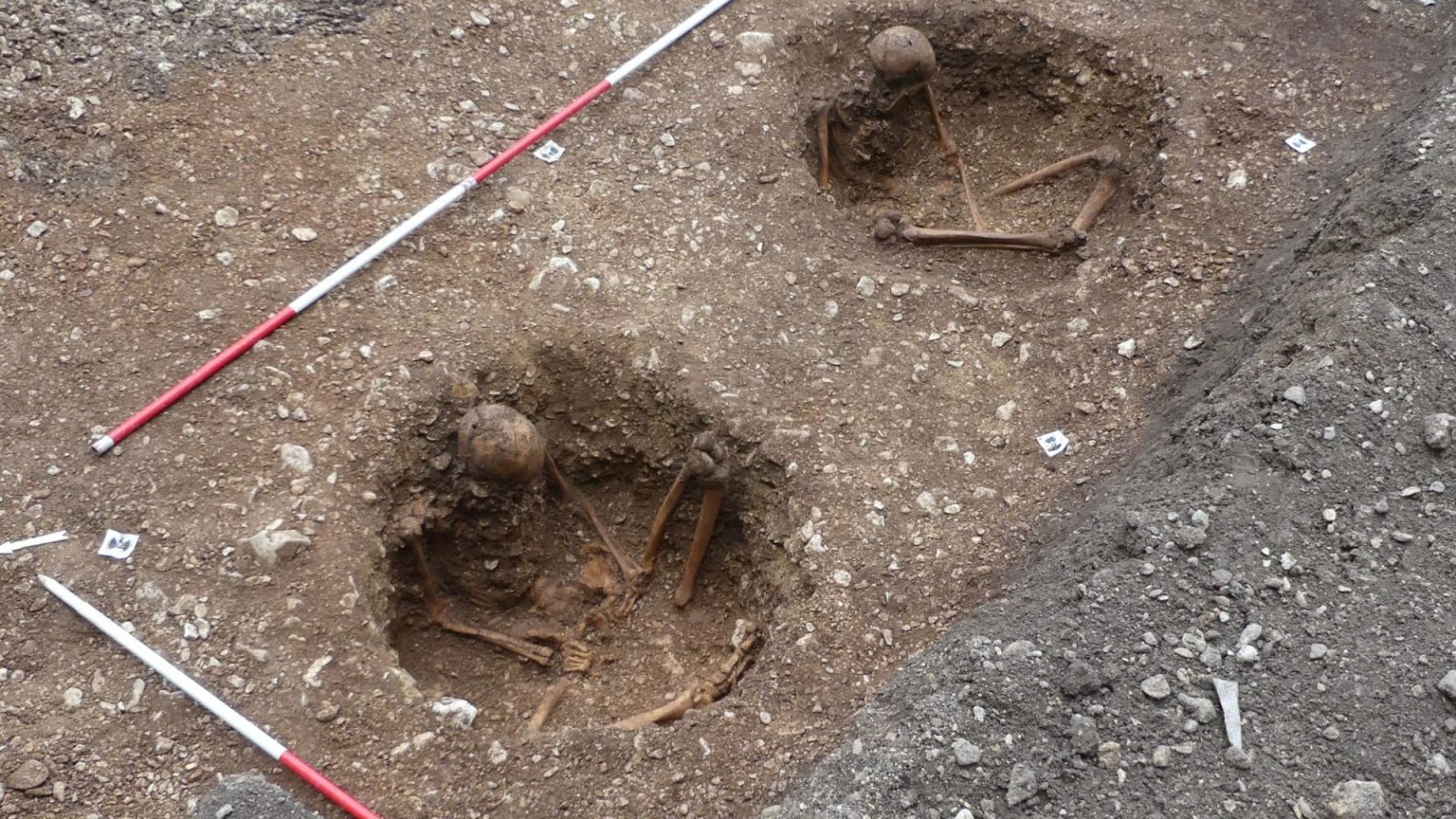The Enigmatic Circular Graves of Dijon: A Glimpse into Iron Age Gallic Burial Practices
In the heart of Dijon, France, within the former garden of the Cordeliers convent, archaeologists have unearthed a remarkable discovery – a cluster of 13 circular graves dating back to the second Iron Age (450-25 BCE). This unique burial site, a rarity in Gaul with only eight other known locations in France and three in Switzerland, offers a fascinating glimpse into the funerary practices of this ancient Celtic civilization. Arranged in a linear formation spanning 25 meters, the one-meter diameter pits housed skeletons meticulously placed in a seated posture, facing westward. This distinctive burial ritual, with arms resting across the torso and hands positioned near the pelvis or femurs, suggests a deliberate and symbolic arrangement. The uniformity of the burials, coupled with the absence of personal artifacts save for a black armband on each individual, raises intriguing questions about the social status and beliefs of the deceased.
The peculiar westward orientation and seated posture of the interred individuals hint at deeper cultural significance. Similar Gallic burial sites, often situated near aristocratic dwellings, sanctuaries, or places of worship, suggest that these individuals held positions of political or religious importance within their community. The uniformity of the burials further reinforces this notion, echoing the stylized depictions of seated or cross-legged figures found on stone or metal artifacts from the late La Tène period and the early Roman Empire. This meticulous arrangement of the bodies, coupled with their location away from common necropolises, implies a specific ritual reserved for individuals of particular social standing. The lack of personal belongings, aside from the ubiquitous black armbands, may indicate a focus on communal identity over individual possessions in the afterlife, or perhaps a ritualistic stripping away of earthly ties before entering the next world.
Beyond the Circle: Exploring the Children’s Necropolis and Later Uses of the Site
While the circular graves offer a glimpse into the burial practices of Iron Age Gaul, the Cordeliers convent garden held further archaeological surprises. A separate necropolis, dating to the 1st Century CE, contained the remains of at least 22 infants, believed to have perished before reaching their first birthday. The children were buried in the more conventional supine or lateral positions common to that era, accompanied by a variety of grave goods including stone casings, nails, coins, and ceramics. The presence of decayed wooden coffins indicates a more elaborate burial practice compared to the circular graves. The absence of older individuals within this necropolis suggests a designated burial space specifically for infants and young children, perhaps reflecting societal beliefs and mourning practices surrounding infant mortality.
The history of the site extends beyond these two distinct burial periods. Evidence of later agricultural use, including planting pits near the children’s graves, indicates that the sacred ground was eventually repurposed for practical needs. The discovery of bovine skulls dating back to the 16th or 17th century CE further reveals the site’s transformation into a butchery area. This layered history underscores the dynamic evolution of land use over centuries, reflecting changing societal needs and practices.
Unraveling the Mysteries: Interpreting the Archaeological Evidence
The discovery of the circular graves in Dijon presents archaeologists with a unique opportunity to further understand the social structures and belief systems of the Gallic people during the Iron Age. The careful arrangement of the bodies, their westward orientation, and the absence of personal effects all contribute to the mystery surrounding these individuals. Were they members of a specific social class, religious order, or perhaps a warrior band? Further analysis of the skeletal remains, including DNA testing and isotopic analysis, may provide clues about their diet, health, and geographic origins, shedding light on their lives and social roles.
The children’s necropolis offers a contrasting perspective on funerary practices in Roman Gaul. The presence of grave goods and the use of coffins suggest a different set of beliefs and rituals surrounding infant death compared to the earlier Iron Age period. Analyzing the grave goods and skeletal remains may provide insights into child health, mortality rates, and social customs during this era. The later agricultural and butchery activities at the site, although seemingly mundane, provide valuable context for understanding the long-term history of land use and the evolving relationship between human activities and sacred spaces.
The archaeological investigations at the Cordeliers convent garden have revealed a rich and complex tapestry of human history, spanning from the Iron Age to the early modern period. The discovery of the circular graves, the children’s necropolis, and the evidence of later land use provides a valuable window into the evolving cultural landscape of this region. Further research and analysis promise to unveil further details about the lives, beliefs, and practices of the individuals who once occupied this site, enriching our understanding of Gallic and Roman Gaul.




